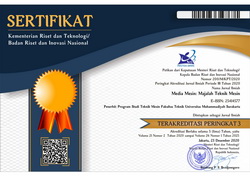STUDY OF ALTERNATIVE FUELS AND EFFECTS OF COMPRESSION RATIO ON THERMAL EFFICIENCY AND ENGINE POWER
Sarjito Sarjito(1*)(1) Universitas Muhammadiyah Surakarta
(*) Corresponding Author
Abstract
Full Text:
PDF (Bahasa Indonesia)References
De Freitas, C.C. and Marchant, D., 2006, Effects of Compression Ratio on Thermal Efficiency and Power Using Alternative Fuels, M.Sc. Thesis, Automotive Engineering, Kingston University, London
Brusstar, M., et al, 2002, High Efficiency and Low Emissions from a Port-Injected Engine with Neat Alcohol Fuels, sae-2002-01-2743-v2.pdf, U. S. Environmental Protection Agency
Brusstar, M. and Bakenhus, M., 2006, Economical, High-Efficiency Engine Technologies for Alcohol Fuels, National Vehicle and Fuel Emissions Laboratory, epa-fev-isaf-no55.pdf, U. S. Environmental Protection Agency
Goldsborough, S. S. and Blarigan, P. V., 2003, Optimizing the Scavenging System for a TwoStroke Cycle, Free Piston Engine for High Efficiency and Low Emissions: A Computational Approach, International Multidimensional Engine Modeling User’s Group Meeting at the SAE Congress, Sandia National Laboratories.
Article Metrics
Abstract view(s): 586 time(s)PDF (Bahasa Indonesia): 360 time(s)
Refbacks
- There are currently no refbacks.








